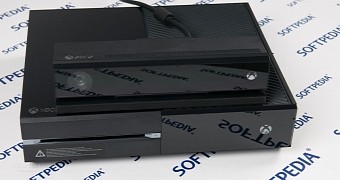At the moment, the Xbox One is having a long-term problem because almost no move that the team in charge of it at Microsoft has made in the past few months has managed to reliably boost its sales and bring it over the rival PlayStation 4 from Sony.
The company has cut the price in the United States, a move which seems to be permanent, but in January the console did not take first place in the hardware chart compiled by NPD Group.
At the same time, Microsoft has announced that it is offering more games for those who subscribe to Xbox Live Gold and has implemented a reduction in the price of the service, which is currently described as momentary but might become permanent in the coming months.
The company does have other ways of boosting sales of the Xbox One during the year and the fact that Halo 5: Guardians will be delivered in the fall will generate an organic wave of interest in the platform.
But until then, there seems to be no clear way of making the device more interesting than the PlayStation 4 to buyers.
However, Microsoft might be ignoring a simple and quick way to make the Xbox One more interesting: a focus on the Kinect motion tracking system.
Kinect was originally integral to the next-gen console experience
When the Xbox One was first introduced, after years of speculation from potential users, the Kinect was deemed to be an integral part of the experience.
Gamers were supposed to use the device to control their home console from anywhere in the room, with all apps required to make use of the device, and there were supposedly several studios working on video games that would make good use of motion tracking.
Microsoft's plans were ambitious and they changed several times before the actual launch of the Xbox One.
Kinect was bundled with the console initially and there were some apps designed to take advantage of it, but the price of the bundle was deemed to be too high, and under the pressure of better-than-expected sales for the PlayStation 4, Microsoft decided to drop the motion tracking peripheral in order to increase sales.
Since then, Kinect was offered as a separate purchase, apparently with little success, and the company also dropped the price of the bundle for a limited period, probably in order to test its long-term potential.
Kinect and apps could be a winning combination
A recent leak is claiming that Microsoft is getting ready to introduce an entirely new and open application environment for the Xbox One, which would basically mean that any team with an idea and with some resources will be able to publish on the home console.
A Software Development Kit is planned for launch in May and the switch might be introduced as soon as November of this year.
The freedom to create applications for the Xbox One with limited Microsoft oversight might make the Kinect more interesting because small developers will find new and innovative ways to use motion tracking for the home console.
Sony has no similar solution for the PlayStation 4 and that could offer the Xbox One an interesting competitive advantage.
Microsoft should increase the value offered to users by finding a way to get the Kinect into the hands of as many users as possible.
The best way to do that would be to give it away for free or, if that does not cover costs, offer it for as low a price as possible and in attractive bundles.
If that happens, the Kinect might become an unlikely advantage for the Xbox One rather than a drawback.

 14 DAY TRIAL //
14 DAY TRIAL //